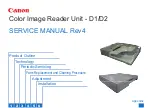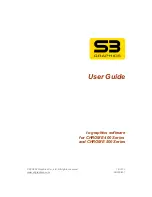
6
Preparing the SCSI Devices
Preparing the SCSI Devices
Setting up SCSI devices typically involves setting SCSI IDs and
termination, mounting internal SCSI devices inside your computer,
and connecting power cables to each SCSI device.
Setup varies for different kinds of SCSI devices. Always refer to the
device’s documentation for specific instructions. In general, to
prepare SCSI devices for setup:
■
Check the SCSI IDs—
The PowerDomain 2930 and each SCSI
device you connect to it requires a unique SCSI ID from 0 to 7.
The PowerDomain 2930 is preset to ID 7 and should not be
changed. The IDs for internal SCSI devices are usually set with
jumpers; external SCSI devices are usually set with a switch on
the back of the device.
■
Terminate the Ends of the SCSI Bus
—To ensure reliable
communication on the SCSI bus, the SCSI device at the end of
each cable, or the end of the cable itself, must have a terminator
installed (or enabled). Terminators must be removed or
disabled on SCSI devices that are connected between the ends
of each cable.
If you are installing internal SCSI devices, see
Connecting Internal
SCSI Devices
on page 6
.
If you are installing external SCSI devices only, close your
computer cabinet, and see
Connecting External SCSI Devices
on
page 10
.
Connecting Internal SCSI Devices
To connect internal SCSI devices:
1
Turn off the computer, disconnect the power cord, and ground
yourself by touching the chassis.
2
Verify that each internal SCSI device you are installing has a
unique SCSI ID from 0 to 6. Refer to the SCSI device’s
documentation to determine the ID setting.
Note:
If any two SCSI devices (internal or external) have the same
SCSI ID, change the ID on one device. The PowerDomain 2930 is
preset to SCSI ID 7 and should not be changed.








































